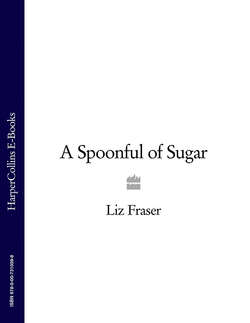Читать книгу A Spoonful of Sugar - Liz Fraser - Страница 39
FOOD NASTIES TO LOOK OUT FOR
ОглавлениеIf you want to make sure your kids eat better quality and healthier food, you just need to know what to look out for when you’re shopping. You don’t have to go mad, checking every label – it’ll soon become quite clear what’s OK and what’s not, and you’ll change your buying habits accordingly.
Colourings are one of the top offenders. A study of 300 youngsters by the Government’s Food Standards Agency (FSA) found they lacked concentration and became more impulsive after drinking a mixture of artificial additives. Used in a number of foods, including soft drinks, sweets, cakes and ice cream, these include:
Sunset yellow (E110) – Colouring found in squashes
Carmoisine (E122) – Red colouring in jellies
Tartrazine (E102) – New colouring in lollies, fizzy drinks, sweets and sauces
Ponceau 4R (E124)
Quinoline yellow (E104)
Allura red AC (E129)
Other things to avoid
Trans-fats. The artificial hardening of vegetable oils by hydrogenation can form some unhardened, so-called, trans-fats, which cannot be properly digested by the body. These have been linked to coronary heart disease, and the simplest advice, since labelling is often not very clear (products such as cakes
and biscuits that include hydrogenated fats in the ingredient lists do not often mention trans-fats) is to avoid all foods that list hydrogenated or partially hydrogenated fats or ‘shortenings’ on their labels.
Salt. Young children’s kidneys can’t cope with too much salt. Babies need less than 1g per day, and even eleven year olds should have no more than 6g. There is enough in the food they eat anyway so you should never add more, and always choose reduced salt options.
Added sugar. If it has added sugar, find an alternative. It’s that simple. Fizzy drinks are full of added sugar, and even fruit juices aren’t the best as they cause tooth decay. If kids are thirsty, get used to offering water or milk. Snacks can just be fruit or crackers. It doesn’t have to be a biscuit or chocolate bar!
Sodium benzoate (E211). This is a preservative, commonly found in soft drinks. Some research has shown that benzoates could make the symptoms of asthma and eczema worse in children who already have these conditions.
Sulphur dioxide (E220). A preservative found in a wide range of foods, in particular soft drinks, sausages, burgers, and dried fruit and vegetables. It has been linked to asthma, but in very rare cases.
Preparation: products that have been deep fried are clearly less healthy than those that haven’t, as they’re coated in batter (chicken nuggets, anyone?) or covered in a sticky sauce, like BBQ chicken. If you can, choose foods that have been adulterated or processed the least.
So does Granny have any suggestions as to how I can start feeding my kids more wholesome ingredients again, without chatting up the Time Lord, who’ll whiz me back to 1925, or moving to the South of France for daily trips to the oh-so-healthy Marché? Yes she does, and it all comes down to shopping. Wahey. We like shopping.
‘The thing that has changed is the way you shop. We used to visit the local butcher, the local greengrocer and the local baker. Everything was made that day or came from nearby, and it hadn’t been messed about with by anyone. Nowadays you all go to the big supermarkets and fill up on stuff to last the whole week, or even longer. And, how do you think it lasts so long before it goes off?’
Scientific wizardry? Better fridges? Botox?
‘It’s not real food any more!’
